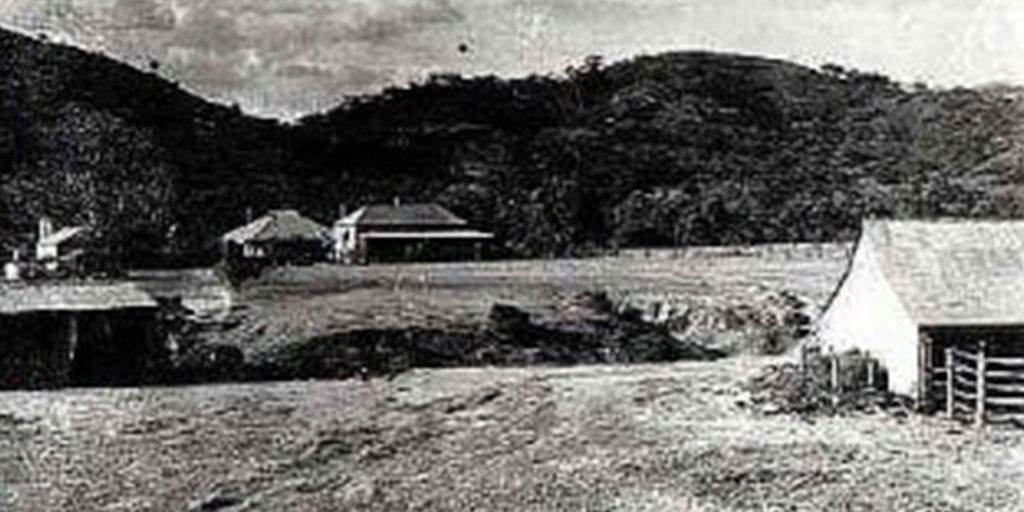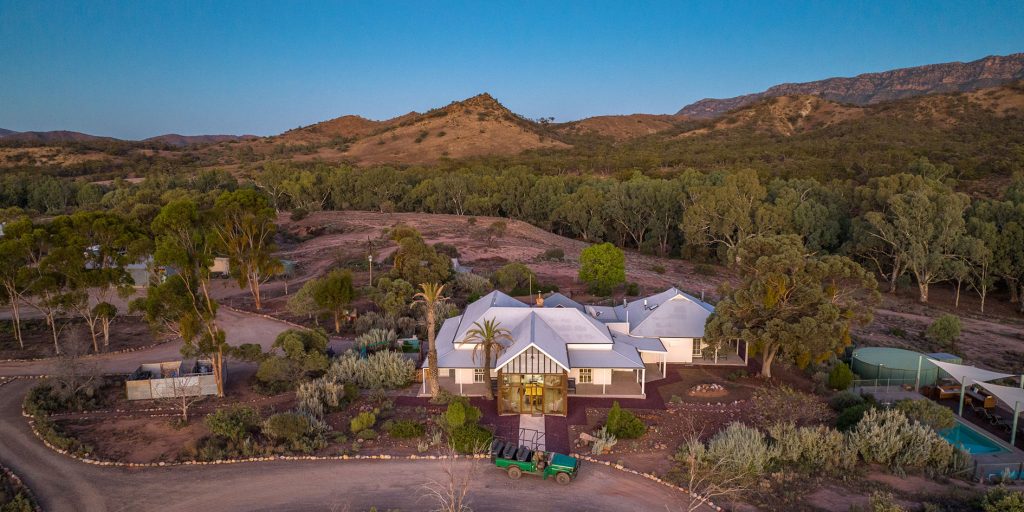THE FIRST INHABITANTS
The Flinders Ranges were originally inhabited by the Adnyamathanha (Hill People) thousands of years ago, and many still reside here today. Cave paintings, rock engravings and other artifacts indicate they have lived in the region for tens of thousands of years. The area and its people played an integral part in the long-distance trade routes that crossed the continent. Ochre and pituri, a mildly narcotic drug, were traded along with stones used to make axes and tools, and shells which were used for decoration. Important archaeological sites including ochre quarries (ochre is used as a paint decoration in ceremonies), rock quarries and art sites have been found among the hills and valleys of the Flinders.
EARLY EXPLORATION AND SETTLEMENT
In March 1802 the first European explorer to the region was Matthew Flinders, who spotted the ranges from the deck of his ship, Investigator, as it sailed up Spencer Gulf. From his anchorage south of present-day Port Augusta he sent an exploratory party to climb a nearby peak which is now known as Mount Brown, named after his intrepid botanist.

Edward John Eyre was the next to arrive to the region in 1839. He set out over a period of two years to explore the western edge of the range. In 1850 William Browne, J.F. Hayward, G. Marchant and an Aboriginal guide explored more country to the North. Heavy rain stopped the party just north of Hawker so they had to return to Booborowie Station, which was settled earlier in 1843. William Chace, a stockman for the Brownes, was later sent to further explore the country. It was then that Chace discovered the Arkaba, Wilpena and Aroona country (the Chace Range on Arkaba’s eastern boundary remains testimony to his work).
Doctor William James Browne (1815-1884) and Doctor John Harris Browne (1817-1904) claimed Arkaba and were issued with Pastoral Lease 129 in July 1851 and engaged Frederick Sinnett, a surveyor from Adelaide to survey their claims. Although practising doctors, the Browne Brothers abandoned their medical careers soon after arriving in Australia and turned to buying property. They were the second settlers in the region after establishing Booborowie Station.
Early in 1851 they placed managing partners, the Marchant Brothers, in charge, giving each a half share in the property. The Great Drought of the 1860s broke many pastoralists, including the Marchant Brothers, who left Arkaba. The Brownes however, had the means of surviving and stayed on.
During the 1890s dingoes posed a great threat for the survival of Arkaba as it was still unfenced. As a result Arkaba changed hands a few times between the 1860s and 1900, the owners not being able to hold on to the property and it was reduced to 460 sq km (180 sq miles or 115,000 acres). Today the property is 260 sq km (100 sq miles or 64,000 acres).
1900 ONWARDS
In 1901 Otto Bartholomaeus purchased Arkaba. Bartholomaeus spent all of his money and borrowed to erect a vermin proof fence six feet high. Paddock after paddock was fenced. The cost of 14 miles of fencing in 1912-1913 was 954 pounds; labour 324 pounds; material plus freight 630 pounds. A man’s wage was 30 shillings per week.

The completion of the dingo fence allowed dingo numbers to be controlled and Arkaba became a successful venture. Otto’s son, Frank took over the station and they held it in the family until 1984 when the Rasheed family purchased the property. When the Rasheeds moved to Arkaba in 1984 there was only one road on the property and so destructive were the rabbits that much of the country looked like a moonscape.
The first major project was a program to eradicate vermin by using bulldozers, explosives and chemicals. This project took more than 14 years and many hundreds of thousands of dollars but the result was magnificent and won them three Ibis Awards for Pastoral Management. Bushes and trees that had not been seen for many years returned and the carrying capacity of sheep increased from 3000 to 8000. Also, approximately 10,000 feral goats were removed from Arkaba.
ARKABA HOMESTEAD & WOOLSHED
The five-bedroom heritage homestead was built in 1856 and retains its original Flinders region settler lines. Originally, it was two cottages and later was joined together with a building between the two. Since then the ‘bones’ of the homestead have remained the same.

The Historic Arkaba Woolshed was built in 1856 and was used as a depot shed for the surrounding properties. The original corrugated iron roof is still on the building to this day, along with the ‘kit-form’ roof struts which were shipped over from Oregon, USA.

Back in the blade shearing days it was a 40 stand shed but now, with electric wide combs, it is a five stand shed. Still to this day you will find names etched on the stone wall of shearers gone, dating from today right back to the late 1800s.








